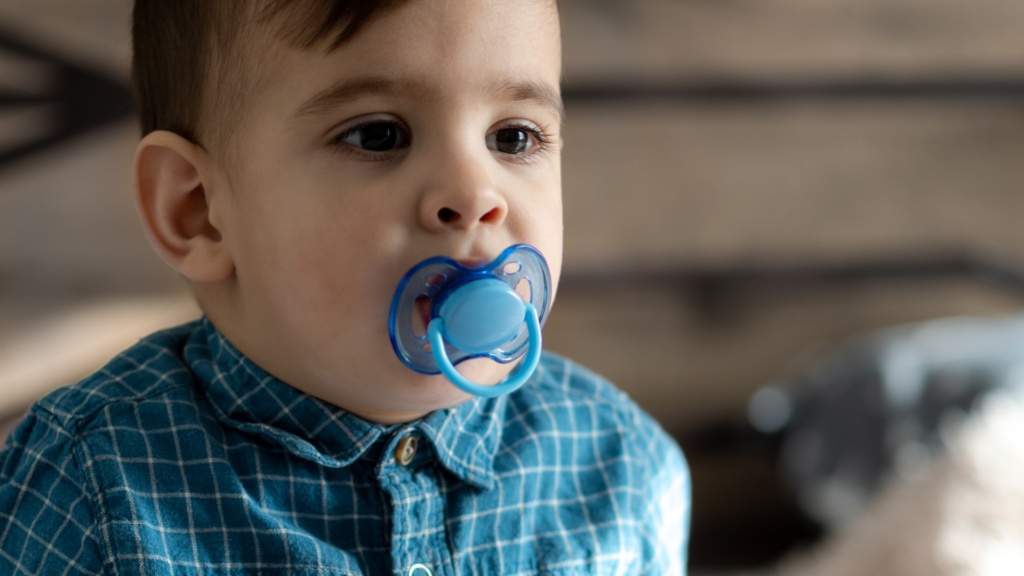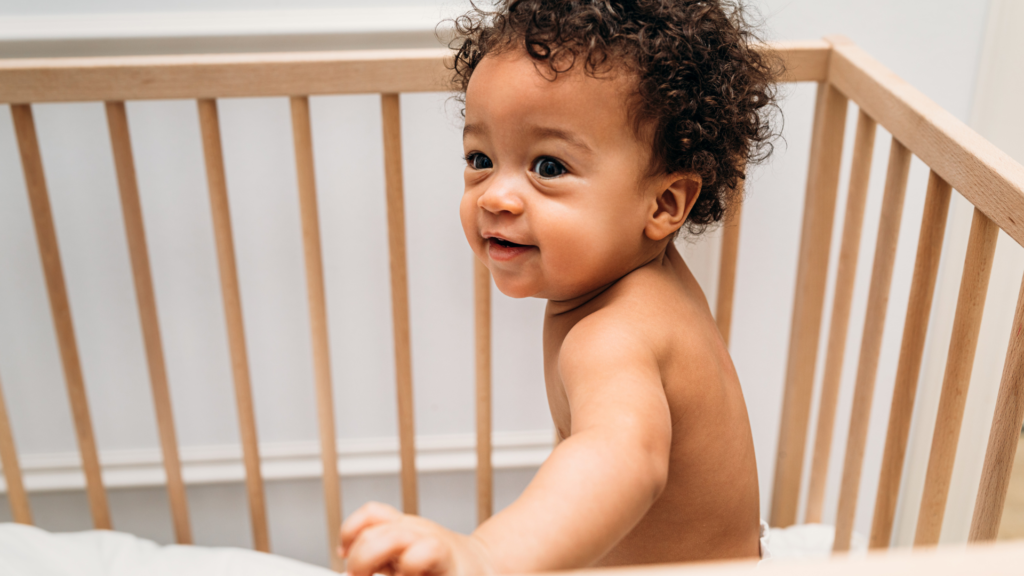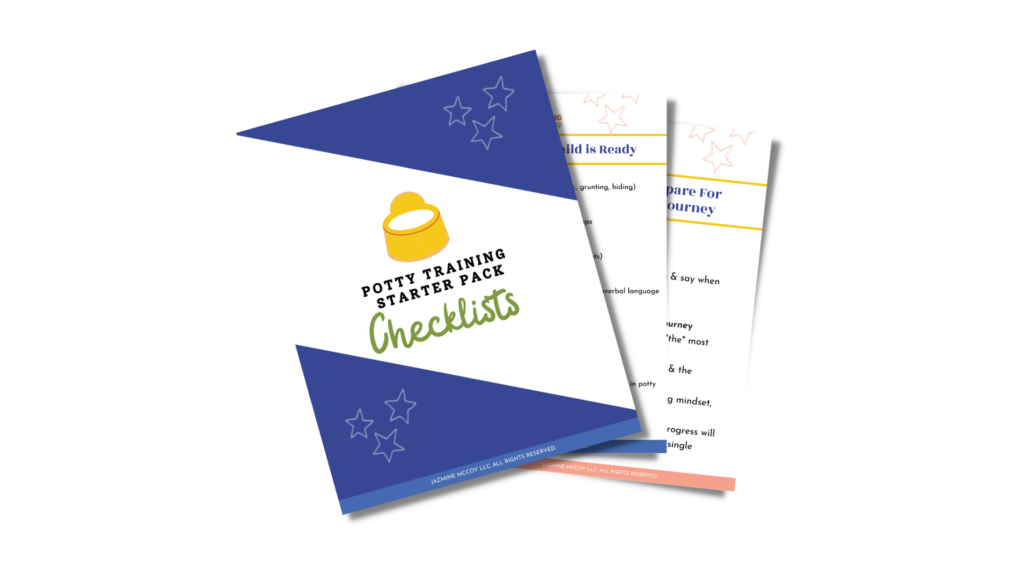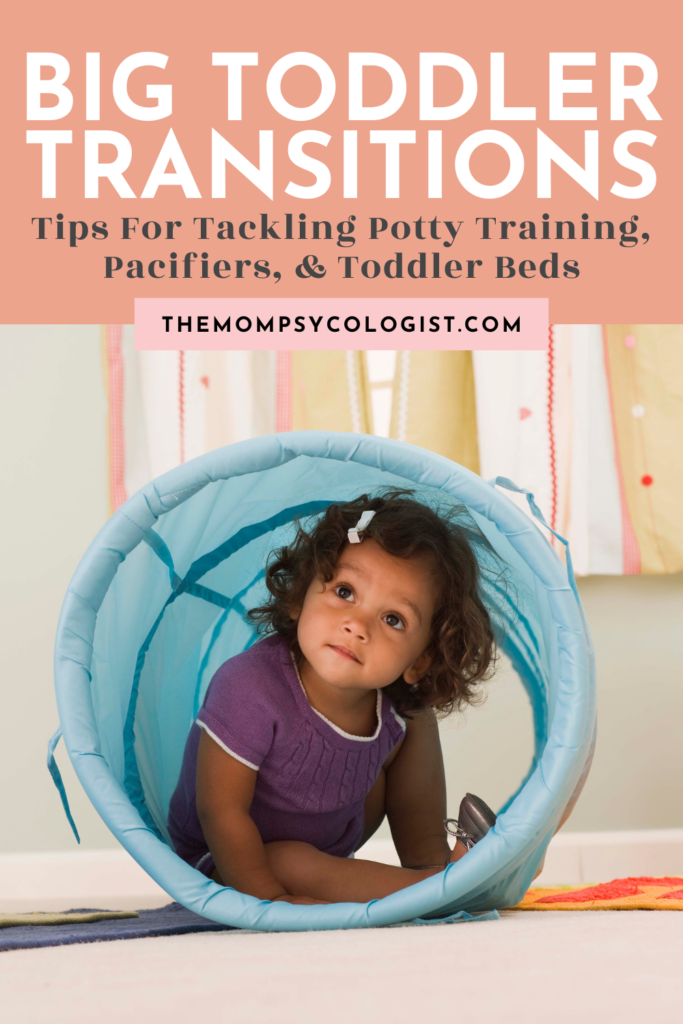watch now!
A place where I discuss all things related to toddlers and motherhood!
Subscribe to my Youtube channel
As a clinical psychologist, published author, and mother to two cheeky young children, I get it. I’ve spent YEARS researching and filtering through the noise online, so you don’t have to.
PARENTING TIPS
POTTY TRAINING
ANTIRACISM
PLAY
Blog Topics
SIBLING RIVALRY
SCREEN TIME
TANTRUMS
DISCIPLINE
Hi I'm Dr. Jazmine
Big Toddler Transitions: Tips on When to Tackle Potty Training, Pacifiers, and Toddler Beds
topics:

It’s no secret – the toddler years are full of transitions from bottles to cups, from cribs to toddler beds, from pacifiers to other comfort items, and from diapers to potty training. A lot is going on, and it can be very stressful – not only for our kids but also for us.
So you might wonder what is the best order? You know you shouldn’t do these toddler transitions all at once since you don’t want to overwhelm your toddler.
So are you supposed to potty training or get rid of the crib? Are you supposed to ditch the pacifier or should you start with potty training? How do you make these judgment calls?
Let’s imagine that all 3 of these things are true. Let’s imagine that you want to start potty training your toddler, you want to transition from a crib to a toddler bed, and you’re also facing the need to ditch the pacifier.
Toddler Transition #1: Start with ditching the pacifier first.
I recommend you start with the pacifier first before you start any of the other things. Every toddler is different in terms of how they handle the transition, but a lot of times this is the easiest and quickest.
It can take a couple of days or weeks, but then, over time, they adjust to their new reality. To make the transition smooth, it’s important to do a bit of groundwork before we ditch the pacifiers so that we set everybody up for success. I have a video that walks you through how to ditch pacifiers quickly and gently.

Toddler Transition #2: Next, move from the crib to a toddler bed.
What’s important to remember about cribs – and a lot of sleep consultants will recommend this – is that your toddler should sleep in their crib for as long as it is safe to do so.
The reason is it takes kids a while to understand from a developmental level how to stay in their bed. Given their newfound freedom, it’s hard for young toddlers to understand they need to stay in their bed and get their rest.

If your toddler transitions too early, it can cause a lot of behavioral issues and frustration around sleep. I would try to keep your toddler in a crib – if you can and it’s safe – closer to 3 years old.
Of course, if you have safety concerns like your toddler climbing out of the crib, then absolutely start thinking about transitioning them to a toddler bed.
But I wouldn’t transition them until you’ve made sure you’ve done some preventative work to make the crib safer, such as:
- Lower the crib mattress
- Turn around your toddler’s crib so the railing is along the wall
- Remove any nearby furniture or anything your toddler might use to climb out
- Put your toddler in a sleep sack so their mobility is a limited
I would try these things out first before you get rid of the crib altogether. If you’re ready to make the transition, check out my video where I go into depth on how to smoothly transition from a crib to a toddler bed.

Toddler Transition #3: Finally, take on potty training.
Potty training is less about age and more about your child’s developmental readiness.
Children in the U.S. will start potty training anywhere from between 18 months to 36 months – that’s a huge age range, and every child is going to start at a different time. What I love to recommend is don’t focus on the age – focus on whether your toddler is developmentally ready.
How do you know if your toddler is developmentally ready for potty training? I have a FREE Potty Training Starter Pack that can help. It includes checklists on how to know if your toddler is ready to start, potty training essentials, and how to mentally prepare yourself and your toddler for the journey. I also have a video that walks you through how to decide whether your toddler is ready to potty train.
But here are a few potty training tips on how to determine if your toddler is ready:
- Your toddler has the motor ability to walk to and from the potty. This is a very important skill for them to master so they can independently get themselves to the potty. Another motor skill is they can push their pants down and pull their pants back up. You can help them with these things, of course, but that’s a good skill for them to practice before you start the journey.
- For linguistic or language skills, you want to look out for if they can recite their ABCs or if your toddler is using words for potty, like pee and poop.

- For emotional and social skills, you want to look for interest and curiosity in the potty. Maybe your toddler is following you to the potty or talking about it.
- Another common sign is they’re able to use symbolic thought, meaning they’re able to picture something in their mind because your toddler has to register mentally they have to go potty and then mentally picture the potty to make the plan to go to the bathroom.
I know these are things that we take for granted as adults, because we’re like, “Just go to the potty.” But from a developmental perspective, this takes higher order thinking. So evidence of symbolic thought would be if they can use different objects to symbolize different things – a common example is using a banana to symbolize talking on the phone.

Download my potty training checklists for a complete and comprehensive list of developmental science to know when to start potty training to make sure that your toddler is ready – because if they’re not, then you’re going to have a lot of trouble and unnecessary stress.
Plan ahead and space these 3 big toddler transitions out.
Life happens, so I understand it’s not always possible, but whenever you can, give your toddler a 3-month buffer between each big transition. Depending on your toddler, you can give them a bit more or less time. But 3 months is a good amount where your toddler has space in between the changes.
You don’t want to overwhelm your toddler with too many things they have to adjust to all at once.
Rooting for you,
Dr. Jazmine
Love this? Don’t lose it! Click below and save it to your Pinterest!

Leave a Reply Cancel reply
Copyright The Mom Psychologist® 2025
grab my free script pack!
explore
work with me
information
About
Blog
YouTube
Podcast
TMP University (Coaching)
Privacy Policy
Terms of Use
Product Disclaimer
Contact
TMP Times (Newsletter)